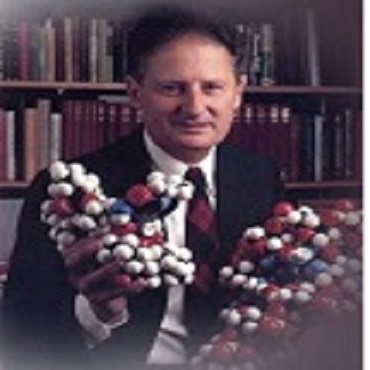Scientific Program

Henry M. Sobell
University of Rochester, USA
Title: The centers of premeltons signal the beginning and ends of genes
Biography:
Henry M. Sobell completed his studies at Brooklyn Technical High School (1948-1952), Columbia College (1952-1956), and the University of Virginia School of Medicine (1956-1960). Instead of practicing clinical medicine, he then went to the Massachusetts Institute of Technology (MIT) to join Professor Alexander Rich in the Department of Biology (1960-1965), where, as a Helen Hay Whitney Postdoctoral Fellow, he learned the technique of single crystal X-ray analysis. He then joined the Chemistry Department at the University of Rochester, having been subsequently jointly appointed to both the Chemistry and Molecular Biophysics departments (the latter at the University of Rochester School of Medicine and Dentistry), becoming a full tenured Professor in both departments (1965-1993). He is now retired and living in the Adirondacks in New York, USA.
Abstract
Premeltons are examples of emergent structures (i.e., structural solitons) that arise spontaneously in DNA due to the presence of nonlinear excitations in its structure. They are of two kinds: B-B (or A-A) premeltons form at specific DNA-regions to nucleate site-specific DNA melting. These are stationary and, being globally nontopological, undergo breather motions that allow drugs and dyes to intercalate into DNA. B-A (or A-B) premeltons, on the other hand, are mobile, and being globally topological, act as phase-boundaries transforming B-into A- DNA during the structural phase-transition. They are not expected to undergo breather-motions. A key feature of both types of premeltons is the presence of an intermediate structural-form in their central regions (proposed as being a transition-state intermediate in DNA-melting and in the B- to A- transition), which differs from either A-or B- DNA. Called beta-DNA, this is both metastable and hyperflexible and contains an alternating sugar-puckering pattern along the polymer-backbone combined with the partial-unstacking (in its lower energy-forms) of every other base-pair. Beta-DNA is connected to either B- or to A- DNA on either side by boundaries possessing a gradation of nonlinear structural-change, these being called the kink and the antikink regions.
- Next Generation DNA Sequencing
- Molecular Biology Techniques
- Sequencing & Microarrays
- DNA Replication & Recombination
- Computational Molecular Biology & Biochemistry
- Molecular Biology & Biomarkers
- Recombinant DNA Technology
- RNA Processing & Protein Synthesis
- Clinical Biochemistry
- Proteomics in Biochemistry & Molecular Biology
- Nano Biochemistry
- Bioorganic & Biological Chemistry
- Glycobiology in Biochemistry & Molecular Biology
- Plant Biochemistry
- Protein & Analytical Biochemistry

